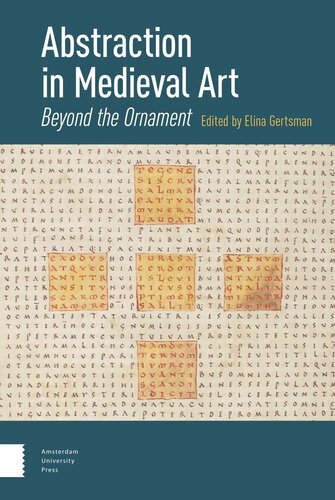

Most ebook files are in PDF format, so you can easily read them using various software such as Foxit Reader or directly on the Google Chrome browser.
Some ebook files are released by publishers in other formats such as .awz, .mobi, .epub, .fb2, etc. You may need to install specific software to read these formats on mobile/PC, such as Calibre.
Please read the tutorial at this link: https://ebookbell.com/faq
We offer FREE conversion to the popular formats you request; however, this may take some time. Therefore, right after payment, please email us, and we will try to provide the service as quickly as possible.
For some exceptional file formats or broken links (if any), please refrain from opening any disputes. Instead, email us first, and we will try to assist within a maximum of 6 hours.
EbookBell Team

0.0
0 reviewsAbstraction haunts medieval art, both withdrawing figuration and suggesting elusive presence. How does it make or destroy meaning in the process? Does it suggest the failure of figuration, the faltering of iconography? Does medieval abstraction function because it is imperfect, incomplete, and uncorrected-and therefore cognitively, visually demanding? Is it, conversely, precisely about perfection? To what extent is the abstract predicated on theorization of the unrepresentable and imperceptible? Does medieval abstraction pit aesthetics against metaphysics, or does it enrich it, or frame it, or both? Essays in this collection explore these and other questions that coalesce around three broad themes: medieval abstraction as the untethering of image from what it purports to represent, abstraction as a vehicle for signification, and abstraction as a form of figuration. Contributors approach the concept of medieval abstraction from a multitude of perspectives-formal, semiotic, iconographic, material, phenomenological, epistemological.